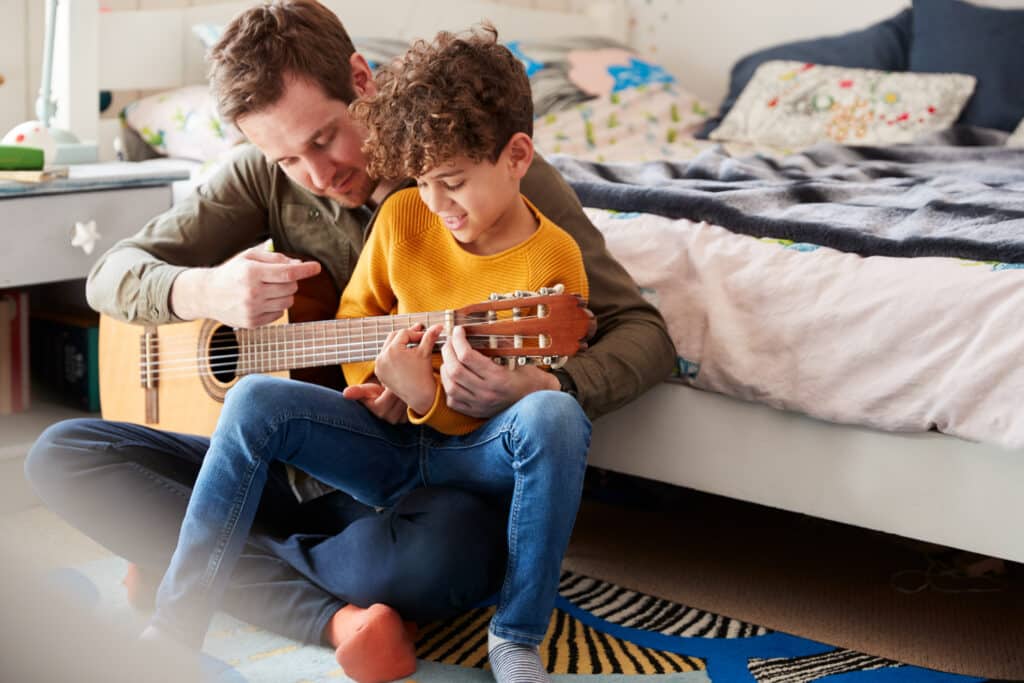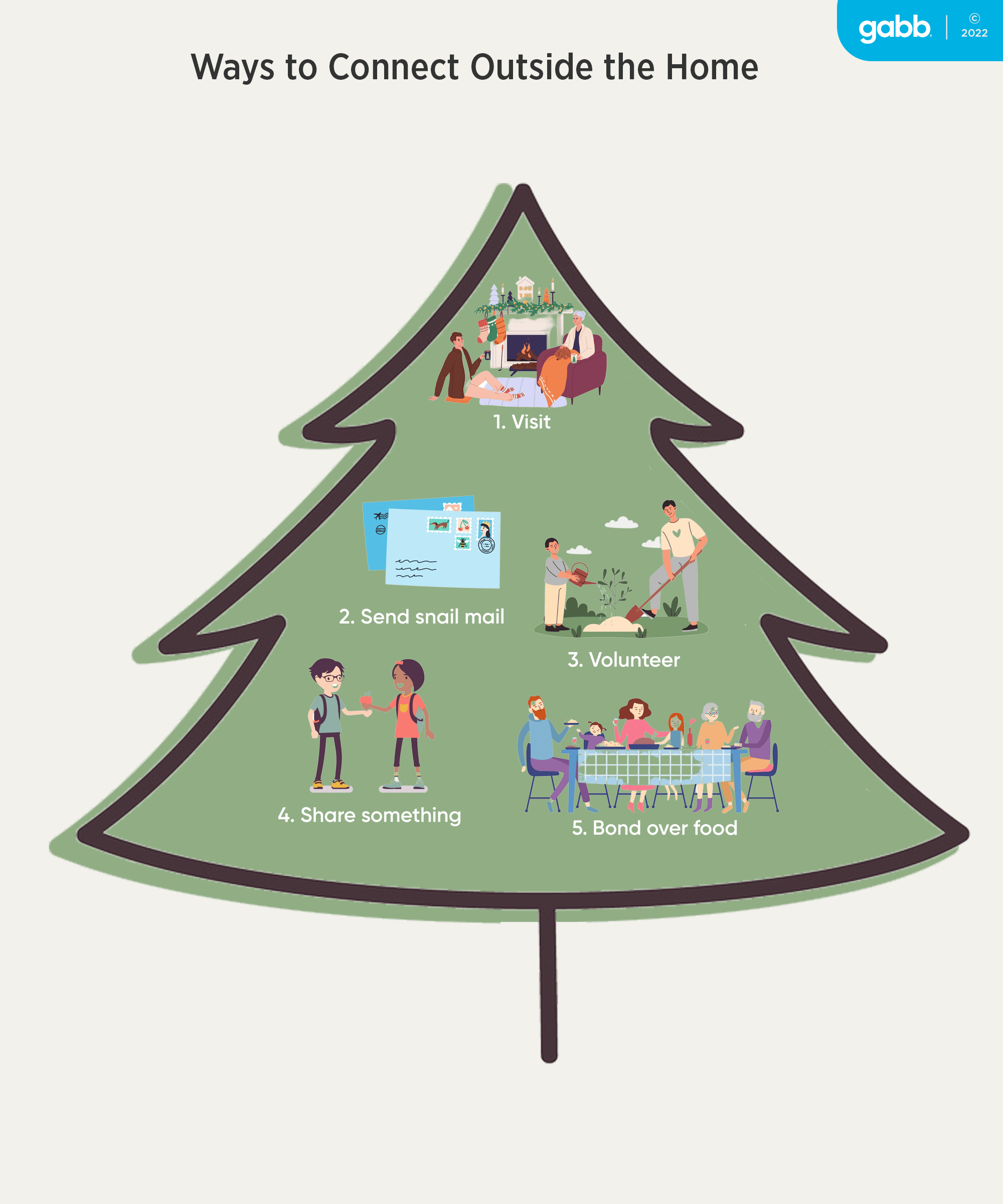Technology has made it easier than ever to connect with friends and family. We can video call, text, or send a message on social media with the touch of a button. But even with these conveniences at the tips of our fingers, the rate of loneliness has more than doubled since the 1980s. [11]
79% of Gen Z respondents report feeling lonely—a significantly greater proportion than other generations. [1]

Benefits of Connection
Humans are wired to connect. Psychological theories and research both show evidence that feeling connected can decrease depression, relieve PTSD symptoms, improve cancer survival, control blood sugars, and help people maintain a healthy body mass index. [2]
One study found that when the internet was used to escape in-person interactions, loneliness increased. However, when it was used to enhance existing in-person relationships or create new meaningful bonds, it reduced loneliness. [3]
By teaching our children to connect in healthy ways, we can support their mental and physical health.

We Can Just Try Our Best
We are going to talk about some ways to connect with our kids in the sections below. Every family has different circumstances, and so the ideas below are meant as a resource. There are so many wonderful ways to build relationships in every situation.
Ways to Connect with Our Kids at Home
Kids learn in the home before they ever venture out into the world. We can show them what real connection looks like.
1. Read Together
Reading with our kids is a wonderful way to spend time together. Children thrive when having a parent’s undivided attention. Reading is also beneficial for a child’s vocabulary. Kids whose parents read them five books every day had heard 1,483,300 words by the time they turned five!
Now 5 books/day is a lot! Each family’s circumstance is unique, and so any time we can curl up together and enjoy a story will deepen our connection with each other.
2. Create or enjoy music together
Music is the universal language that can bond and connect families. Research suggests that music helps with memory, deepens language learning, and supports fine and gross motor skills. [5]
Three out of four adolescents under 18 reported listening to music as a favorite activity. [10] Music can be a great way to bond with your teen by learning about their musical taste. Share your favorite songs with your kids and let them share their music with you. Get the grandparents in on the fun!
If you have musical skills, you can teach your child an instrument or create music together. Parents don’t have to be expert musicians to bond with their child through music. It can be enjoyed together as a family—have a sing-off key during car rides, a dance party while doing dishes, or an epic air-guitar battle!
3. Write kids a note
Little ones love to draw pictures and write down the newest words they’ve learned in school. These little love notes are often made especially for mom or dad. Can you imagine the look on your child’s face when you present them with a note or picture you made just for them? Printing these notes off and having them handy in a kitchen drawer makes for a quick way to help our kids feel noticed and loved.
Parents and caregivers can print out these notes and fill it out with or for a child. Exchange these notes with each other to communicate freely in a loving and positive way.
4. Spend one-on-one time with kids
Young people love it when we engage with them. Spending a few minutes a day getting down on their level will reinforce our relationship. We can play a game together or do an activity they choose. With multiple children, spending one-on-one time time can be a challenge. Some families make a “date” each month, and even a few minutes of undivided attention really makes a difference.
These activities don’t need to be elaborate or financially straining. We can integrate one-on-one time into our daily routine. Encourage your child to join you as you fold laundry, make dinner, run an errand, or even watch a show.
5. Serve together
When we serve others, we feel a sense of belonging. [9] Helping a neighbor with a chore opens us up to conversation. These community bonds help kids know that there are adults all around who are there to support them.

Ways to Connect Outside the Home
Just as important as connecting with those in your home, is connecting with those in your community. Every community looks different. Some may have extended family members as part of their community, and others may have neighbors and classmates. No community is the same, but all serve a vital role in a child’s sense of security and wellbeing.
1. Visit
An in-person visit to a loved one can lift their spirits and let them feel seen. Kids love to hear stories from the “olden days”, and seniors enjoy sharing the wonders they have seen throughout their lives.

2. Send snail mail
In the past decade, mail through the Postal Service has dropped by more than 50 percent. Apart from holiday cards and invitations, the average American household only receives 10 pieces of personal mail per year. [6]
A study found that people feel loved when small gestures are exchanged amidst everyday mundane activities. Sending a note in the mail is a small act, but that little surprise in the common act of opening the mail will send a signal of love and connection. [7]
Encourage your child to have a pen pal. Whether it’s someone your child knows, or a new international friend through International Pen Friends. Love for our Elders is another website that provides the name and address of an elderly person who could use some love through a handwritten note or drawing. Parents can oversee the correspondences to be certain nothing inappropriate is being exchanged.
3. Volunteer
Spending time serving others brings people together. When we share experiences and support a cause we’re passionate about, our bonds can deepen. Kids who volunteer are more likely to feel connected to their communities, do better in school—with 19% more likely to graduate from college than those who don’t volunteer—and are less likely to engage in risky behavior. [12]
If you volunteer, consider inviting your child to join in. Or ponder your child’s strengths and come up with ideas together of service they might enjoy. Search online for local service opportunities that match their interests. Www.justserve.org is a wonderful resource.
4. Share something
We all have something to share. Some enjoy cooking, gardening, or reading. Preparing and delivering a meal for someone, or taking them some extra tomatoes from the garden could make their day. Has your child read a good book lately? Encourage them to let a friend borrow it, then get together to discuss it.
5. Bond over food
Getting together with a friend to share a meal is a regular social activity in many societies. Research shows that those who eat socially are often happier and more satisfied with life. They are more trusting of others and actively engaged in their local communities. [8]
Parents can help their children plan dinner with friends. Look up some recipes together, send out some invites, and enjoy your time together in the kitchen. Not only will this invigorate their friendships, it will also benefit your own relationship as you work side by side with your child.

Connection Leads to Happiness
Social relationships are considered the strongest and most important predictors of happiness. [13] As parents, we can facilitate social relationships for our children by encouraging them to reach out and actively participate in their friendships.
References
- Beilock, S. L. (2020, July 27). Why Young Americans Are Lonely. Scientific American. https://www.scientificamerican.com/article/why-young-americans-are-lonely/
- Martino J, Pegg J, Frates EP. The Connection Prescription: Using the Power of Social Interactions and the Deep Desire for Connectedness to Empower Health and Wellness. Am J Lifestyle Med. 2015 Oct 7;11(6):466-475. doi: 10.1177/1559827615608788. PMID: 30202372; PMCID: PMC6125010.
- Nowland, R., Necka, E. A., & Cacioppo, J. T. (2017). Loneliness and Social Internet Use: Pathways to Reconnection in a Digital World? Perspectives on Psychological Science, 13(1), 70–87. https://doi.org/10.1177/1745691617713052
- The importance of reading to kids daily. (n.d.). College of Education and Human Ecology. https://ehe.osu.edu/news/listing/importance-reading-kids-daily-0
- Brown, L. (n.d.). Making Music with Kids. https://www.parentingsuccessnetwork.org/making-music-with-kids/
- Shain, S. (2018, October 8). We Could All Use a Little Snail Mail Right Now. The New York Times. https://www.nytimes.com/2018/10/08/smarter-living/we-could-all-use-a-little-snail-mail-right-now.html
- Heshmati, Saida & Oravecz, Zita & Pressman, Sarah & Batchelder, William & Muth, Chelsea & Vandekerckhove, Joachim. (2017). What does it mean to feel loved: Cultural consensus and individual differences in felt love. Journal of Social and Personal Relationships. 36. 10.1177/0265407517724600.
- Dunbar, R.I.M. Breaking Bread: the Functions of Social Eating. Adaptive Human Behavior and Physiology 3, 198–211 (2017). https://doi.org/10.1007/s40750-017-0061-4
- indness matters guide. (n.d.). Mental Health Foundation. https://www.mentalhealth.org.uk/explore-mental-health/kindness/kindness-matters-guide
- Rideout, V., and Robb, M. B. (2019). The Common Sense census: Media use by tweens and teens, 2019. Common Sense Media. https://www.commonsensemedia.org/sites/default/files/research/report/2019-census-8-to-18-full-report-updated.pdf
- McGregor, J. (2017, October 4). This former surgeon general says there’s a ‘loneliness epidemic’ and work is partly to blame. Washington Post. https://www.washingtonpost.com/news/on-leadership/wp/2017/10/04/this-former-surgeon-general-says-theres-a-loneliness-epidemic-and-work-is-partly-to-blame/
- Volunteerism | Youth.gov. (n.d.). https://youth.gov/youth-topics/volunteerism
- Saphire-Bernstein, S., & Taylor, S. E. (2013). Close Relationships and Happiness. Oxford Handbooks Online. https://doi.org/10.1093/oxfordhb/9780199557257.013.0060












Success!
Your comment has been submitted for review! We will notify you when it has been approved and posted!
Thank you!